I am taking some off the shelf weighing scales and would like to interface a PIC to them for display and wireless transfer... The scales have four 3-wire load cells, one in each corner, and look very like the ones on the SparkFun web site. I am guessing but I think the load cells have two resistors in them, one for tension and one for compression. After the bridge arrangement the output of the bridge goes into a capacitor, resistor arrangement. I am guessing that the next stage is an amplifier of some type but it's inaccessible to me as it's a custom controller covered by a black blob.

Please can someone confirm the picture is about right and also suggest a good, PIC friendly way, to amplify the output either before or after the discrete.